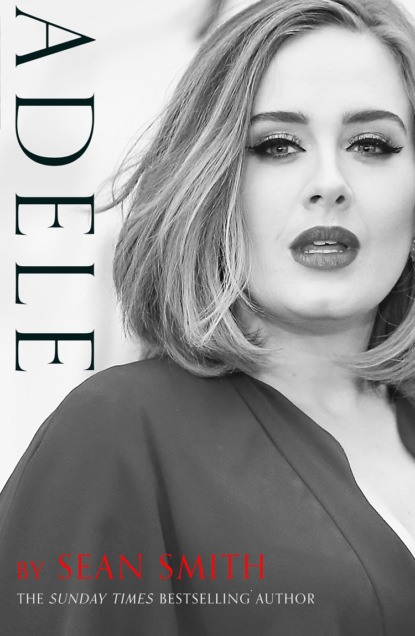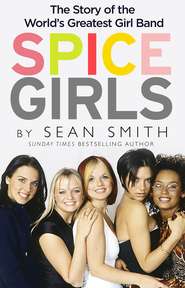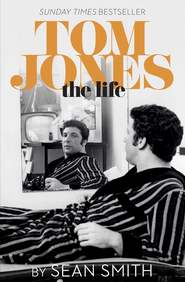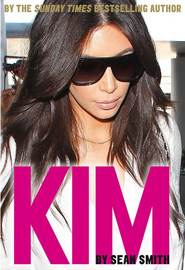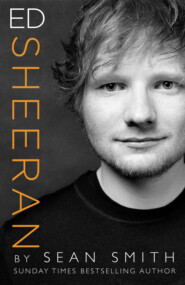По всем вопросам обращайтесь на: info@litportal.ru
(©) 2003-2024.
✖
Adele
Настройки чтения
Размер шрифта
Высота строк
Поля
As a teenager, Adele was far more intelligent and culturally aware than she likes to let on. One of her classmates observes, ‘She was very smart!’ Liz confirms, ‘She was very bright. She always looked older than she was, so it was easy to forget that she was pretty much the youngest in her year. You might think she’d struggle and be behind the others, but she did not struggle at all. She is very quick witted. Some of the students were very able performers but struggled with the academic, literacy side of things, but Adele didn’t.
‘The thing about Adele is she was quick. She didn’t need telling loads of times. She would just go off and, you know, do it. She also had very grown-up handwriting. Her work always looked like a sixth-form student rather than a thirteen- or fourteen-year-old.’
Adele didn’t turn into a nerd the moment she went through the doors of the BRIT School. As Liz Penney tactfully put it, ‘Sometimes she worked hard and sometimes she worked not so hard.’ In other words, she embraced being a teenager with gusto.
She made friends easily with other students who were older than her. She already knew Tawiah from the open day and the elder girl would try to watch out for her: ‘Adele was always cool and shit. She was like my little one.’
Tawiah would look for Adele at Clapham Junction when they changed trains in the morning. Often she would be with another girl, Kate Nash, who was also in the year above but specialised in theatre. She would be destined for great things in a career that mirrored Adele’s for a while. At this stage, the two girls, who were only nine months apart in age, simply made each other laugh.
Adele’s best friend, however, was an extroverted teenager from Brixton, down the road from her old stamping ground. Laura Dockrill, also a close friend of Kate’s, is two years older than Adele, but they shared the same approach to urban life and embraced its unpredictability. Laura observed, ‘I love the pure mix-up of people; you can never stereotype a road in South London.’
Laura’s favourite childhood memory was of her father driving the family to Battersea Park, where everyone would ‘pour out with bikes and breadsticks’. Her father was a prop man and she loved the ever-changing view of people as he whizzed about collecting and picking up all manner of objects around central London, people watching and eating crisps in cheap cafés.
Laura had an imaginative view of the world and, crucially for her friendship with Adele, the two teenagers weren’t in competition to become the world’s greatest singer. Laura studied theatre with Kate. She is a talented artist, performance poet and writer, and an example of the diverse nature of students at the BRIT School. She found her inspiration walking around her beloved hometown, declaring, ‘I love watching, listening and thinking.’ It’s easy to imagine such an outlook on life having a significant influence on her younger friend.
The two teenagers shared a love of vintage clothes and big dangly earrings – the kind made famous by Pat Butcher in EastEnders. They didn’t agree on everything, however, particularly where designer labels were concerned. Adele, for instance, loved Burberry, but Laura preferred clothes that were one-offs.
With her new set of friends, Adele enjoyed what London had to offer. A trip to watch the first UK tour by the American singer Pink at the Brixton Academy proved an eye-opener. It was the first time she was impressed by the sheer power of a live performance. Pink had a fine voice but sang songs that were accessible to chart followers. Adele explained, ‘I had never heard, being in the room, someone sing like that live. I remember sort of feeling like I was in a wind tunnel, her voice just hitting me. It was incredible.’
While the Pink show had a profound effect on Adele’s understanding of performing live, an even more significant event in her musical development occurred when she was mooching around Oxford Street one Saturday afternoon and drifted aimlessly into the HMV store.
She received £10 a week pocket money from Penny, so, after investigating the new chart CDs that she couldn’t afford, she rummaged through the bargain bin, emerging with two for a fiver. She didn’t know it then, but one of them would be of huge importance to her.
The first CD was by jazz great Ella Fitzgerald and the second by Etta James. Etta was one of the most lauded and influential female singers of the past fifty years, but Adele had never heard of her. She chose it for two reasons: first, she was careful with money and loved a bargain – a trait she had inherited from her mother when they had to watch the pennies; secondly, she thought Etta had beautiful cat-like eyes and fabulous hair, although it was one of the blonde wigs she invariably wore.
Adele pictured herself with hair like that and figured that if she took the cover photograph into the hairdresser’s, they could copy the style. It seemed like a good idea at the time, but when she got home, she idly tossed the albums onto a shelf and forgot all about them.
About a year later, when she was fifteen, she finally got around to listening to them. She liked Ella, because it was impossible not to, but she absolutely loved the rasping, raw power of Etta James: ‘I found that her delivery was just so sincere that she really could convince me she was singing directly to me. Which is something I had never ever found in any other artist.’
Adele looked at the ordinary London girls she loved growing up, such as Gabrielle and Emma Bunton, and believed she could be them. There wasn’t much she shared with Jamesetta Hawkins, who changed her name to Etta James when she recorded the defiantly risqué and subsequently banned ‘Roll with Me, Henry’ in 1955.
Etta never knew her father, although she suspected he was the famous pool shark Minnesota Fats. Her fourteen-year-old mother gave her up for adoption, but when she re-entered Etta’s life, she turned out to be a hustler who ended up in jail. Violence, prejudice and serious drug abuse became the staples of a hard life. It didn’t help that Etta was continually ripped off by unscrupulous record company executives. As the Guardian put it, ‘She was addicted to heroin and bad men.’
By the time Adele listened to Etta, the latter had finally received the acclaim she deserved for some classic songs, including her signature ballads, the sensuous ‘At Last’ and the emotional ‘I’d Rather Go Blind’. But it was the despairing ‘Fool That I Am’ that had a profound effect on Adele.
It wasn’t just the sentiment of regret and final parting – ‘This is goodbye, but I still care’ – it was the way she conveyed her feelings. Adele became obsessed with the sincerity in her voice: ‘It was the first time a voice made me stop what I was doing and sit down and listen. It took over my mind and body.’ Surprisingly, perhaps, Etta didn’t write the song, she just had total empathy with it. It was written in 1946 by Harlem-based songwriter Floyd Hunt and recorded initially by his own quartet, featuring jazz singer Gladys Palmer. The peerless Dinah Washington recorded a smoky interpretation a year later, but it suited Etta’s distinctive vocal style perfectly and she released her definitive version in 1961.
When Adele came home from school at night, she would chill out on her bed listening to Etta for an hour. She knew nothing of Etta’s troubled personal history or her feisty personality. While she was cosseted in the comfy world of the BRIT School, Etta, at a similar age, was a hard-drinking delinquent teenager with a penchant for smoking weed and skipping school.
Adele was by no means the first artist to be influenced by the style of Etta James. The famous white soul singer Janis Joplin copied her raucous quality, as if she were always singing with a chronic complaint, but it is Adele who does Etta most justice.
‘Fool That I Am’ is the blueprint for Adele’s vocal style. The two women have a very similar pitch with a deeply resonant lower register. Adele extends the end of a note in an identical way to Etta, making one word become two. Unsurprisingly, she sang ‘Fool That I Am’ so much that it became a staple of her early live performances and featured on the B-side of her re-released single ‘Hometown Glory’.
Adele could match the intensity of an Etta James vocal, but perhaps at this stage in her life, she couldn’t convey the same inner anger that one critic described as a ‘raging bull quality’. That would change dramatically once Adele had experienced her share of unhappy relationships.
Etta won six Grammies, a star on the Hollywood Walk of Fame and was portrayed memorably by Beyoncé in the film Cadillac Records. She wasn’t impressed when Beyoncé sang ‘At Last’ at the inauguration of President Obama in 2009, publicly stating that she should have sung it and would have done a much better job. A year later, Adele finally saw her live at the B.B. King Blues Club & Grill in Times Square, New York, when the seventy-one-year-old Etta could still belt out a song with attitude. She was scheduled to appear with Adele at the Hollywood Bowl, the last night of the An Evening with Adele US tour, but cried off at the last minute.
When she died in January 2012, Adele wrote a personal thank you in an online blog, graciously praising Etta’s originality and breathtaking voice. Her true feelings are better described in this poignant observation about her biggest influence: ‘I feel her pain.’
5
Missing the Train (#ulink_fa286f4d-0d04-5217-a4ca-7fef5bd1dbf3)
One of the secrets of the BRIT School was that it made students feel comfortable in their own skin – happy with who they were. Physically, Adele changed a lot when she became an adolescent. She was tall, a characteristic she inherited from both her mother and her father, eventually ending up at 5ft 9in. But whereas Penny was always slim, Adele was big boned like Marc, becoming a comfortable size 14–16 as a teenager. Sometimes she would need to reach for the size 18 in a fashion store.
She didn’t help her figure by having a predilection for chocolate digestives and pizza, providing it didn’t have anchovies on the top. ‘I can’t stand to have anchovies in my mouth,’ she declared. ‘I think they are disgusting. They remind me of sea monkeys. When you are a kid and you can go and buy them dry little fish and you can put them in some water and they survive for a little while. Not that I have ever eaten a sea monkey, but anchovies are just salty and yuk! I don’t like them.’
She was unbothered by her size, however, and never threw herself into PE or a faddy diet to be MTV thin. She was content eating lunch rather than going to the gym, as long as it didn’t affect her health or any potential relationship. None of her close girl friends was obsessing over their weight. In fact, it was the boys in her set who were most conscious of the way they looked, favouring lettuce leaves over pasta. She exclaimed, ‘And they’re not even gay, they’re straight. Trying to be skinny indie boys …’
Adele was very interested in the latest fashions and would spend many happy afternoons scouring vintage shops with her mother to find a bargain they could afford. One of the reasons she enjoyed reading glossy magazines was to see what the celebrities were wearing. She enjoyed getting dressed up, but chose clothes more for comfort than anything else, even though she was surrounded by fashion plates at the BRIT School.
The short walk to the school from Selhurst Station was like an elongated catwalk in suburbia. One writer memorably described it: ‘Follow the teen wearing bright yellow drainpipe jeans, a leather motorcycle jacket and bird’s nest hairstyle. The school is no more than a five-minute strut from the station.’
One of the advantages of being a big girl was being able to get into places when she was underage. She had no trouble gaining admission to a club in Holborn, where she used to go with her friends. After a night out when she was fourteen, she came up with the idea for ‘Hometown Glory’, now a classic, but then the idle ramblings of a drunkenly swaying girl trying her hardest not to step on the cracks in the pavement. She told Q magazine, ‘I was really pissed, wobbling all over the place. This French woman comes up to me and goes, “You need help, dah-ling?” And I went, “Nah, it’s me hometown, luv.”’
At this stage, she filed away the promising song to bring out again at a future date. She wasn’t yet fully focused on songwriting and many of the thoughts she had at this age would have to wait to be developed. Another one became the 2016 single ‘Send My Love to Your New Lover’, which she first sketched out when she was even younger – only thirteen.
Adele may have looked mature for her age, but she was more a schoolgirl than a music student. She was enjoying herself. She still couldn’t get out of bed in the mornings, which almost led to the ultimate reprimand. The teachers were despairing of her commitment when she rolled up to classes four hours late, even though she always said that she wasn’t ‘bunking’, just sleeping. She genuinely wanted to go to school each day.
The final straw occurred when she was selected as one of the twenty most promising students to travel to Devon to perform at a West Country festival. They were all due to meet at Clapham Junction to catch the 9.30 a.m. train to Exeter. Adele was one of the closest to the station, just a short hop from West Norwood, but as departure time approached there was no sign of her. The teachers weren’t surprised she was late. She was always late. The Director of Music, Tony Castro, phoned her and asked, ‘Are you on the way?’, expecting a ‘Yes, sorry’ response, but she had only just woken up. She had no chance of making the train. She told Rolling Stone, ‘My heart exploded in my chest. It was pretty horrible. I almost did get kicked out of the school for that.’
Liz Penney had thought she would turn up at the last moment. She confirms, ‘She was so upset.’ A few years later when Liz saw Adele, her former student remembered the day clearly and was still distressed about it. ‘I am so gutted,’ she said.
It was literally the wake-up call Adele needed. She was beginning to understand the massive opportunity she had. Superficially, she was still the same old Adele, always the life and soul, but her older friends were contemplating what they might do when they left school and she, too, was beginning to think about her future.
The BRIT School was becoming famous. For more than a decade, nobody really knew it existed. That changed for ever when Adele was in her second year. At last a pupil had achieved enormous success and would test the school’s policy of playing down the desire for fame.
The breakthrough was achieved, not as many now think, through the efforts of Amy Winehouse or Leona Lewis, but thanks to a stunningly pretty girl from Eastern Europe called Ketevan Melua. The record-buying public knew her better as Katie Melua.
Katie was another example of the diversity of the BRIT School. You could find yourself sitting next to a streetwise girl from West Norwood living with her mum or a middle-class daughter of a heart specialist from Georgia. Their artistic talents brought them together under one roof.
Katie, whose mother was Irish, spent her early childhood in Georgia, then part of the Soviet Union, before her parents moved to Belfast and subsequently to Surrey. A bright, studious girl, she began attending the BRIT School, aged sixteen, after taking her GCSEs.
At one of the school’s showcases, she was discovered by the multi-talented songwriter and producer Mike Batt, a man who has never lived down forming The Wombles pop group. He remortgaged his house to release Katie’s debut album Call Off the Search in November 2003 on his own Dramatico label. His gamble proved to be a shrewd move, because the record went to number one and sold more than 1.2 million copies in the UK within the first five months of release.
Much of Katie’s apparent ‘overnight’ success was due to the enthusiasm of Terry Wogan, who played her enchanting first single on his Radio 2 show. ‘The Closest Thing to Crazy’ was a slushy love song that was unlikely to feature on Adele’s mixtape.
Katie Melua was the biggest-selling female artist in the country in 2004 and 2005. Her teachers were amazed at how quickly it had happened. One minute she was one of the most academic pupils at the school, happily studying for her A Level in music; the next she was sharing a stage with Brian May at a Nelson Mandela benefit in South Africa.
This was a huge deal for the BRIT School. Katie was an ideal role model for students – an accomplished musician writing much of her own material. She also became very wealthy, and was listed as the seventh-richest musician under thirty in The Sunday Times Rich List of 2008. Her fortune then, at the age of twenty-three, was said to be £18 million.
Katie’s boyfriend at school was Luke Pritchard, who formed the successful indie band The Kooks with two other former pupils, Hugh Harris and Paul Garred. She wrote the poignant title song of her second album, Piece by Piece, when she and Luke broke up.
Adele was too young to know Katie, who was nearly four years her senior. She has never cited her as an influence on her singing or her career, but did once say she thought her ‘lovely’. Katie’s melodic combination of jazz and blues owed more to the legacy of Eva Cassidy than to the powerful voiced, soulful or in-your-face singers that Adele preferred.
Amy Winehouse, however, was an altogether different matter. This was a young woman constantly on the edge of pain and regret, with the most emotive voice of her generation. Oddly, Amy and Katie never had much to do with one another, despite being at the BRIT School at the same time, probably because Amy studied musical theatre, whereas Katie stuck to music.
Their debut albums came out at the same time, but while Katie was number one, Amy’s Frank languished in the lower reaches of the charts in January 2004. It was a slow burner, eventually selling a million and becoming hugely influential.





